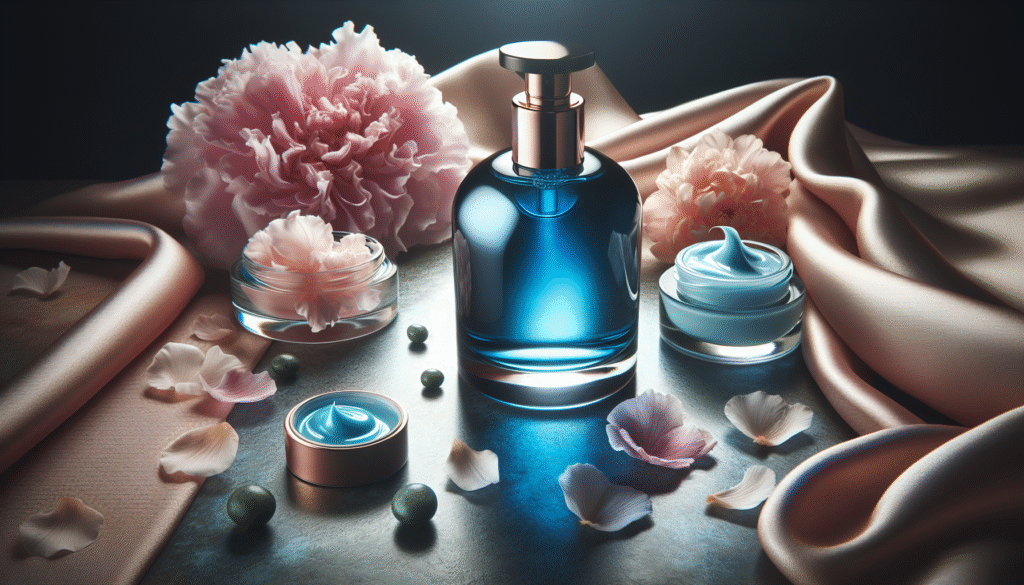
Have you ever considered the impact of your skincare choices on the visibility of wrinkles?
Understanding Methylene Blue
Methylene blue is a compound that has been long utilized in various medical and laboratory applications, particularly for its role as a dye and a redox agent. More recently, it has sparked interest in the beauty and skincare industry due to its potential antioxidant properties.
What is Methylene Blue?
Methylene blue is a thiazine dye that appears as a bright blue crystalline powder, which dissolves in water to produce a vivid blue solution. Originally developed for medical use, it has been utilized as a treatment for methemoglobinemia—a condition in which the blood cannot effectively release oxygen to tissues. Its significance in scientific research and medicine provides a solid foundation for exploring its effects in skincare.
Former Applications in Skincare
In the skincare arena, methylene blue is revered for its potential to penetrate cell membranes, ensuring it reaches deeper layers of the skin. Its antioxidant properties may provide your skin with protection against oxidative stress, which is known to contribute to aging.
The Science Behind Wrinkles
Understanding how wrinkles form is essential to evaluating any treatment’s effectiveness, including methylene blue.
Causes of Wrinkles
Wrinkles primarily develop as a natural part of aging, but several factors can accelerate this process, including:
-
Sun Exposure: Ultraviolet (UV) radiation damages collagen and elastin in the skin.
-
Lifestyle Choices: Smoking, poor diet, and lack of hydration can contribute to premature aging.
-
Genetics: Family history can influence the age and appearance of wrinkles.
-
Decreased Hormonal Levels: After menopause, women may experience increased wrinkle formation due to hormonal changes.
Different Types of Wrinkles
Understanding the types of wrinkles is crucial for any treatment strategy. You might encounter two main categories:
-
Dynamic Wrinkles: These occur due to muscle movement, often in areas where facial expressions are prominent, such as around the eyes and mouth.
-
Static Wrinkles: These are more prominent as the skin loses elasticity and collagen over time and appear even when your face is at rest.

Methylene Blue and Its Proposed Mechanism of Action
To determine the effectiveness of methylene blue in reducing wrinkles, it’s important to examine its proposed biological mechanisms.
Antioxidant Properties
Methylene blue may function as a powerful antioxidant. Antioxidants combat free radicals, which are unstable molecules that can cause cellular damage. By neutralizing these molecules, methylene blue has the potential to protect skin cells and delay the visible effects of aging, including wrinkles.
Cellular Respiration Enhancement
Research suggests that methylene blue may enhance mitochondrial function, improving cellular energy production. This could potentially support skin health, as energized cells are better equipped to repair and regenerate.
Collagen Synthesis
Some studies indicate that methylene blue might aid in the production of collagen, the protein responsible for skin’s firmness and elasticity. Increased collagen levels could help maintain skin structure and minimize wrinkle formation.
Evaluating the Evidence
The potential for methylene blue to alleviate wrinkles has garnered attention from researchers. However, comprehensive studies are required to substantiate these claims.
Clinical Studies
While an emerging body of research hints at the possible benefits of methylene blue, clinical evidence specific to wrinkle reduction remains limited. Key studies focus on its efficacy in wound healing and cell repair processes, which could indirectly influence wrinkle prevention and reduction.
Comparative Studies
It is essential to compare methylene blue with established treatments for wrinkles, such as retinoids, hyaluronic acid, and botulinum toxin (Botox). Each of these alternatives has a well-documented history of effectiveness.
User Testimonials
Many skincare enthusiasts experiment with methylene blue as part of their routines, sharing mixed results in various forums. Although personal experiences can provide insights, they should not replace scientifically validated evidence.

Alternatives to Methylene Blue
Given the limited understanding of methylene blue in the skincare domain, exploring alternative skincare ingredients is advisable.
Retinoids
Retinoids are derivatives of Vitamin A, widely recognized for their effectiveness in reducing wrinkles. They speed up cell turnover and boost collagen production. Retinoids have substantial clinical backing supporting their efficacy.
Peptides
Peptides are short chains of amino acids that play a significant role in maintaining skin structure. Certain peptides are known to stimulate collagen production, offering an alternative method for reducing wrinkles.
Hyaluronic Acid
Hyaluronic acid can hold up to 1,000 times its weight in water, making it a powerful hydrating agent. By drawing moisture into the skin, it helps to plump up the skin and reduce the appearance of fine lines and wrinkles.
The Safety Profile of Methylene Blue
Understanding the safety of any substance you may apply to your skin is paramount.
Potential Side Effects
Methylene blue is generally considered safe for short-term use. However, some individuals may experience skin irritation or allergic reactions. It is crucial to conduct a patch test before applying it extensively.
Interaction with Other Ingredients
If you are using other skincare products, particularly those containing strong active ingredients, consult with a dermatologist. Methylene blue may interact with certain compounds, affecting its efficacy and safety.
The Future of Methylene Blue in Skincare
The landscape of skincare is continuously evolving, and the advent of innovative ingredients like methylene blue may change the narrative surrounding wrinkle reduction.
Emerging Research
As scientific inquiry progresses, new studies may uncover additional benefits of methylene blue in skincare. Staying informed about the latest research is crucial for making educated decisions about your skincare regimen.
Product Development
As cosmetic chemists explore the therapeutic potential of methylene blue, more skincare products formulated with this ingredient may become available. Understanding the formulation and concentration will be important for evaluating their effectiveness.
Conclusion
The pursuit of youthful skin has led to various innovations in the skincare industry. While methylene blue shows promise due to its antioxidant properties and potential to enhance collagen synthesis, the lack of extensive clinical evidence necessitates caution.
As you navigate your skincare choices, weigh the emerging science against established treatments and ingredients. Your skincare journey should be informed, reflective of your unique skin type, and aligned with realistic expectations regarding wrinkle reduction.
Make sure to consult with a skincare professional to determine the best approach that fits your needs. As research progresses, staying abreast of new findings will empower you to make decisions that suit your skin’s health and appearance.